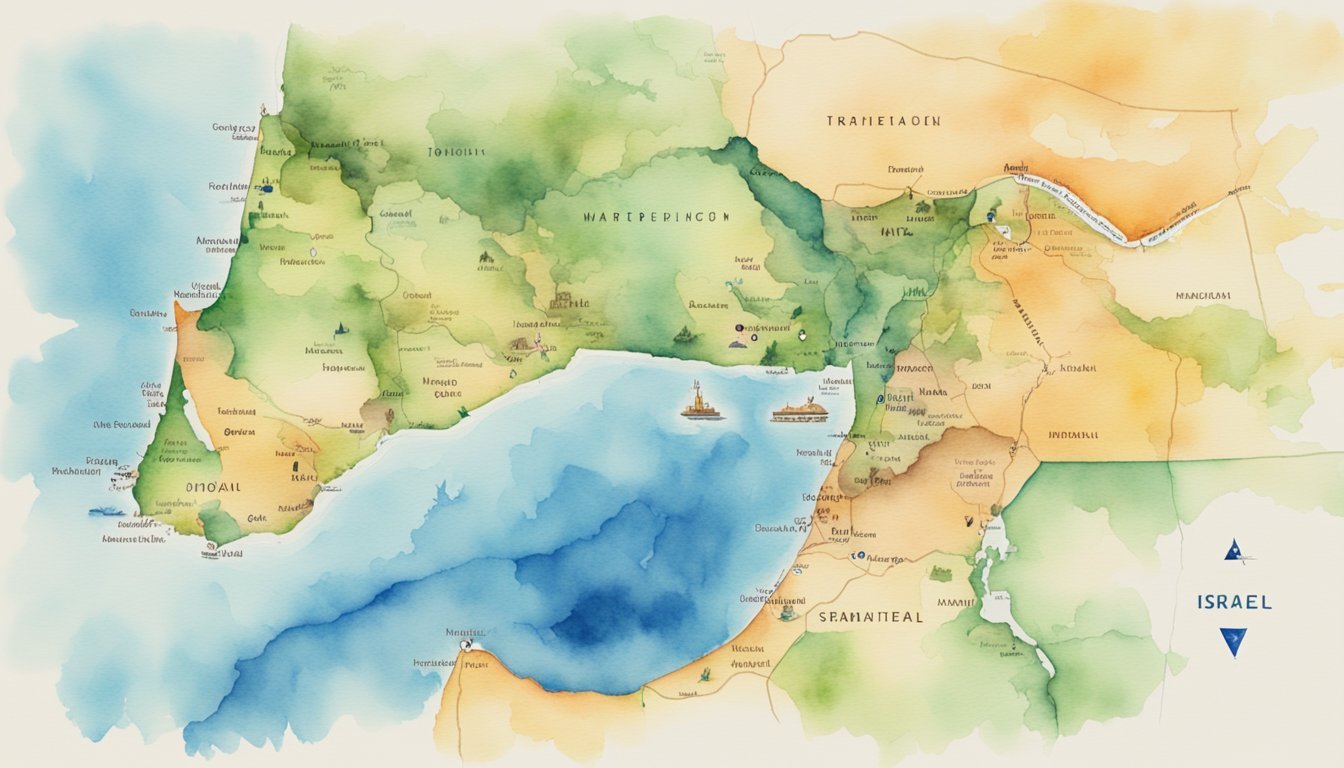Israel as a Nation
Historical Context
Israel, officially the State of Israel, is a country located in the Southern Levant region of West Asia. The modern state was established on 14 May 1948 and has since been recognized by 165 out of 193 United Nations member states. Jerusalem is Israel’s proclaimed capital, although its status as the capital has not received wide international recognition.
The foundation for Israel’s establishment is rooted in Zionism, a 19th-century political movement that supported the creation of a Jewish homeland in the Holy Land. The State of Israel is unique as the only Jewish nation in the modern period.
Political Structure and Government
Israel is a parliamentary democracy with a president as the head of state and a prime minister as the head of government. President Isaac Herzog and Prime Minister Benjamin Netanyahu are the current leaders. Israel’s parliament, known as the Knesset, consists of 120 members who are elected for four-year terms.
The government follows a Basic Law system rather than a traditional constitution. The Basic Laws cover a range of issues, including the structure of the government, civil liberties, and the role of Judaism in the state.
Demographics and Society
Israel is a melting pot of cultures, religions, and languages. Hebrew and English are the primary languages spoken, and the population includes a mix of Jewish and Arab citizens. Israel is home to a variety of ethnic groups, such as Ashkenazi Jews, Sephardi Jews, Mizrahi Jews, and Russian-speaking immigrants.
Despite being a Jewish nation, Israel is also home to a significant number of non-Jewish residents, including Christian, Muslim, and Druze populations. This rich diversity contributes to a vibrant society, which is also the meeting point for the Jewish, Christian, and Muslim faiths.
Economy and International Trade
Israel has developed a strong and technologically advanced economy, becoming a member of the Organization for Economic Cooperation and Development (OECD) in 2010. Its economy is driven by a range of sectors such as high-tech industries, agriculture, and services. Among the most remarkable achievements is the cutting-edge technology that is used extensively in both agriculture and water management practices to combat the challenges of arid land and scarce water resources.
Israel’s currency is the New Israeli Shekel, which has been in circulation since 1985. The economy benefits from strong international trade, especially with the United States, China, and the European Union. Export goods include technology products, gemstones, and pharmaceuticals.
In summary, Israel is a unique nation with a rich history, complex social fabric, and a dynamic economy. As the only Jewish country in the world, it serves as a crucial focal point for people of Jewish, Christian, and Muslim faiths. Nevertheless, it faces challenges involving its recognition as a sovereign state and ongoing conflicts with its neighbors.
Territories and Borders

Geographical Overview
Israel is a country located in the Southern Levant region of the Middle East, bordered by Lebanon to the north, Syria to the northeast, Jordan to the east, the Red Sea to the south, Egypt to the southwest, and the Mediterranean Sea to the west. The country has a relatively diverse topography, consisting of a lengthy coastal plain, highlands in the north and central regions, and the Negev desert in the south. The northern terminus of the Great Rift Valley runs along Israel’s eastern border.
Israel has a rich history and is considered the historical homeland of the Jewish people. However, its territories and borders have been shaped both by wars and diplomatic agreements with neighboring countries, as well as the effects of colonial powers ruling in the region before Israel’s creation. The current borders are the result of several United Nations resolutions, wars, and peace treaties.
Israeli-Palestinian Conflict
A key factor that has shaped Israel’s borders is the Israeli-Palestinian conflict. Since the British Mandate and the partition of Palestine, the conflict has led to the establishment and occupation of Palestinian territories, namely the West Bank and Gaza Strip. The settlements established by Israel in those areas are considered illegal by the international community and have been a major obstacle to peace efforts.
Israel has also established control over other territories, such as the Golan Heights, a strategically important region captured from Syria during the Six-Day War. Israel later annexed the Golan Heights, although this move has not been widely recognized by other countries.
International Relations and Peace Efforts
Israel’s territories and borders have been influenced not only by the Israeli-Palestinian conflict but also by its relations with neighboring Arab countries. For instance, after the 1973 war, Israel and Egypt signed the Camp David Accords, a peace treaty that led to Israel’s withdrawal from the Sinai Peninsula.
Over the years, there have been numerous international efforts to resolve the Israeli-Palestinian conflict, such as the 1993 Oslo Accords, which aimed to establish a framework for peace negotiations. More recently, in 2020, Israel signed the Abraham Accords with the United Arab Emirates and Bahrain, normalizing relations between the countries.
Despite these efforts, Israel’s territories and borders remain a contentious subject, and peace in the region is still a distant goal, with ongoing conflicts in the Gaza Strip and West Bank, among others.

